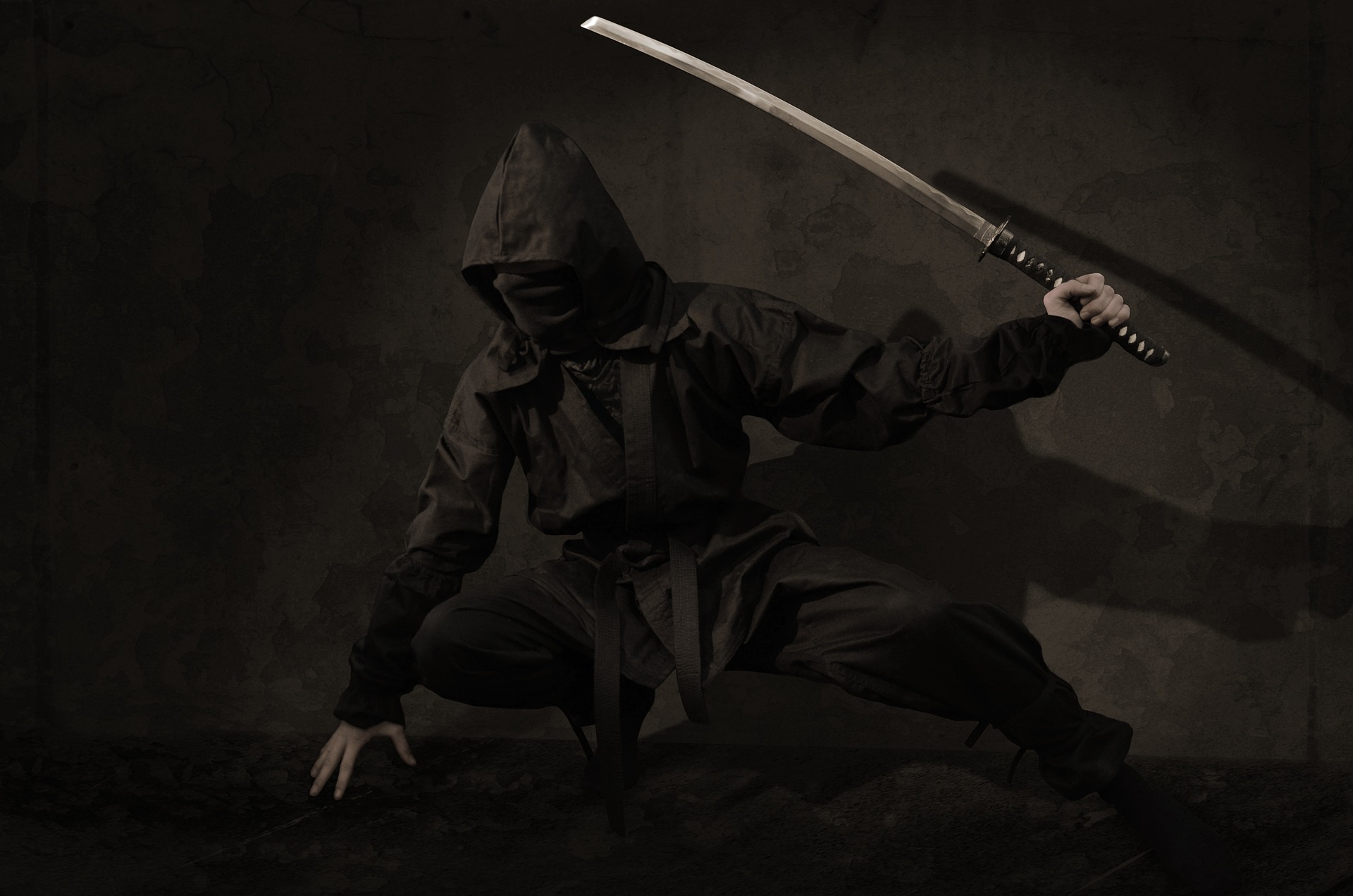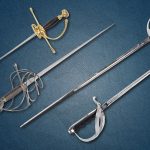If you’ve ever fantasized about starting a collection of historical swords, you should know their high cost. And counterfeits are present wherever money is to be produced. However, in this essay, I want to show you how to determine whether a samurai sword is genuine (an authentic piece of history).
Few people can afford the passion of collecting antique katanas. Perhaps you are a member of that audience, or you are only interested. This will be an intriguing read, so let’s get started.
A knowledgeable trader or connoisseur may recognize the difference right away. There are experts in particular eras of culture and history, such as Japanese medieval craftsmanship.
How to Determine Whether a Samurai Sword is Real
I recall watching the American reality TV program “Pawn Stars.” This humorous old-school pawnshop proprietor chats and haggle with individual sellers of antique goods in this massively popular show. Every time I watched it, engaging conversations, light humor, and unanticipated surprises had me on the edge of my seat.
Unexpectedly, the program is educational, and I always appreciated picking up a few new skills.
The pawnshop owner would bring an expert to assess the value and authenticity of the goods every time a new seller tried to advertise their valuable antique things. They frequently called in an expert to determine if a katana was genuine.
It was even more entertaining to observe the clients’ reactions after learning the truth, whether they were ashamed, disappointed, relieved, or delighted. Here is an additional video:
I like this video much more than the one before it. Since the katana was confirmed to be accurate, Rick has proven to be a trustworthy and fair businessman:
I could see the larger picture, but I was still trying to figure out how to determine whether a samurai sword was genuine and original.
One of the lessons I took away from the katana expert was how much I underestimated the effort required to establish authenticity. It’s absurd how challenging and how much knowledge you need to have to confidently and accurately determine whether a katana sword is authentic.
The expert in these films was able to read and comprehend Japanese characters. He was also well-versed in Japanese history, at least as it related to swords. Additionally, he was familiar with all of the swordsmiths from the previous 1300 years in Japan. I have yet to learn about the top 5 renowned sword makers!
The bottom truth is that you must study a lot before confidently proving katanas.
Can you teach me how to master the sword?
You will need more than one article to become a proficient specialist on Japanese swords. That is at least a long-standing hobby or something resembling a profession.
I can, however, show you what to look for. Even if a katana doesn’t have decades of history, you can tell if it is a good, high-quality cutting weapon, even if you don’t know if it is authentic. You may learn to spot powerful, reliable katanas, so you don’t waste money on subpar copies!
Of course, I won’t attempt to teach you how to write in Japanese. I will only force you to memorize a 1,000-line list of historical figures, dates, and sword manufacturers.
The quality of the blade, from its pointy tip to its pommel, will be evaluated. I wish first to clarify the differences between:
Japanese katanas that are genuine, original, and of great historical significance
incredibly high-quality market katanas that are mass-made.
The two may be similar in steel grade, toughness, and cutting ability. Many sword-making businesses produce great, durable blades that are par with even the renowned samurai swords from museums. Technology is in charge!
The enormous price disparity is caused by nothing more than historical value. Modern handmade blades are more valuable because they are manufactured by hand and have higher finishing and customization.
An authentic katana is fashioned by a Japanese blade-smith utilizing age-old equipment, methods, and skills and is at least a century old.
How to Recognize a High-Quality Katana
When determining a sword’s quality, there are numerous aspects to consider. If I want to get a high-quality cutter, I will think about the following factors:
Does the Steel Have a High Quality?
What type of steel is used to make the katana? First and foremost, is it constructed of steel? Several swords are sharpened wall hangings.
If the sword is composed of pure iron, aluminum, or tin, it is only intended for decorative use. Never attempt to cut with one of these blades or practice with them. You could get hurt because they are simply too unpredictable.
Another inexpensive sword is a katana made of stainless steel. Although made from steel, this stainless alloy is insufficient for combat. Please don’t overdo it with stainless steel katanas; they can crack or chip on your first cutting try. (Stainless steel machetes are another matter.)
Blades made of high carbon steel (1045, 1055, and up to 1095). These are decent and relatively robust. Ideal for novices. They are not the greatest. Katanas made of carbon steel are very sharp but not very stress-resistant.
Steel spring (1568 or 9260). cutting blades with outstanding sharpness and high-stress resistance. Flexible and shock-absorbing. Due to their endurance, these are among my favorites, and I appreciate them.
T10 or L6 Bainite for industrial tool steel. One of the best metal alloys for a sword is this one. It has all the qualities of spring steel but is less flexible. Katanas made from it are highly robust and razor-sharp. These are just as nice as their genuine Japanese equivalents if properly tempered and heat-treated.
Are You Using a Full-Tang Katana?
A sword with full tang is battle-ready. This is beyond discussion. Even if the steel is of the highest quality, you must trust that it won’t break or fly out of the handle when you swing the sword forcefully.
Therefore, when viewing a sword, a portion of the blade must pass through the handle and continue to the pommel (but-cap). The handle conceals this obscured portion of the blade body. The tang is the name of it.
The tang should extend up to the pommel along the entire length of the handle. You should only train with and rely on full-tang katanas!
The tang should be made of robust, durable material. If you don’t, your sword will snap where it inserts into the handle. You will be left absolutely helpless, holding a piece of wood in your hand.
A sharp blade flying across the room is dangerous, even if you are cutting something! Think about witnessing that spinning toward someone. Try to justify that to the authorities.
Therefore, make sure a sword has full tang before purchasing it. Not a rat-tail, and certainly not a half-tang.
How Pointy is Your Samurai Sword?
The katana is not the world’s most excellent sword. But is the most acute. That doesn’t necessarily imply it has the best cutting power, though. That characteristic is influenced by various elements, including weight, geometry, talent, battle style, steel, and sharpness.
As a result, many swords make better cuts. However, the katana user cuts through soft targets by drawing back the sword. This particular ability can be learned, and skilled sworders are very good at it.
The majority of mass-produced swords are battle-ready and sharp. Some may need manual sharpening by a knowledgeable and skillful person with a water stone.
How Tight Is the Handle Wrap Binding?
Even though the blade is constructed of the highest grade steel, you should check the wrapping on the handle. These items frequently fall off, particularly if they need to be adequately tightened. (Refer to the prior videos.)
You can quickly fix any issues you may have with handle wrapping. However, you cannot set a broken blade, so cutting carefully and sparingly should be your primary goal. If it breaks, you may purchase individual katana parts from Amazon online, including the bindings for the handle.
Therefore, you can repair loose wrappings or a broken wooden handle or want to change the color of your sword’s decoration. On YouTube, you can find instructions for wrapping the handle.
Learn More
I hope you found this helpful essay. Now that you know what to look for in a katana. You will learn the fundamentals of determining whether a sword is of solid quality.
I have numerous additional articles on each topic if you have any questions. I delve into several of these topics in great detail. I also chose several affordable katanas that are best for combat use.


